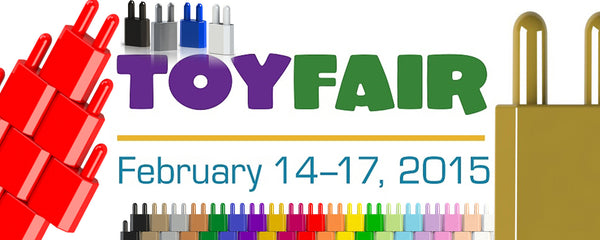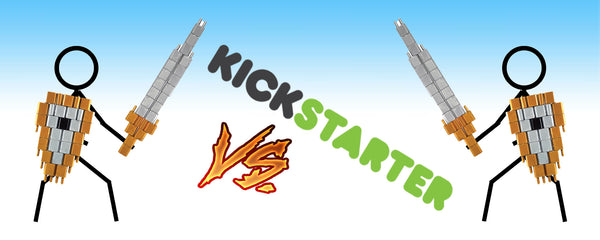Electronic vs. Traditional Toys
We recently stumbled upon a story that tell us how your children MUST experiment with tangible toys and especially with construction toys. Put the Ipad on pause and read further to be one of the parents who are in the light.

Electronic vs. traditional toys? Asked this question a decade ago and I would have unequivocally panned the electronic, the new so-called “interactive” toys and praised to the hilt the virtues of classic play and tried ‘n true playthings. But in the past ten years we’ve come a long way, and so has the technology of toys. Compared to the mindless busy-thumb video games and push-button preschool toys of yesteryear, today’s electronics have far more to offer. Many of the computer games currently online are frankly quite challenging, not to mention creative and thought-provoking, and the offerings for all ages down to wee little tots are immense. In fact, in my own specialty toy store a considerable number of toys I sell are electronic, do require batteries and are chock-full of inviting lights, sounds, and action. They also pass my own test: they engage children in their play, and teach all sorts of cognitive skills from counting to singing to identifying shapes and colors to deducing cause and effect.
Still the bulk of what I sell are traditional toys mainly because electronics, no matter how well-conceived, are limited. Good toys, as I’ve mentioned, are those that engage, but the best toys are those that actively engage a child’s entire being – mentally, physically, emotionally, and socially. In its most natural, child-initiated form, play is miraculously creative: unstructured, imaginative, carefree, and fun. Electronics are by nature pre-programmed and simply cannot provide the same open-ended play opportunities as traditional toys. For example, a computer-generated block-building exercise may challenge a child to build a particular structure. But how can it replicate the physical and very sensory activity of placing and positioning wood blocks, through experimental trial-and-error, and exploring just how high you can build a tower before it topples over – and then experiencing the sheer delight of the blocks finally crashing to the floor? And what if the child decides in the course of block building that it’s not that structure or any structure he or she wants to build but would rather invite a friend to play knights and pretend the blocks are gold bricks they’re loading into a wagon to haul to the king?
As I tell my customers, classic play has a beautiful versatility – at any point children can choose to change the purpose of the toy and in so doing the nature of the play. With traditional toys children are the ones in charge, not the toy. They can choose to play alone or with others. Moreover, their whole bodies are engaged. Unlike with a virtual block, a child playing with a traditional block is learning how to control small muscles and how to coordinate eyes and hands to stack and balance the blocks. She is developing mathematical concepts by sorting the blocks by size and shape and figuring out what number of blocks are needed to fill the space. He is experimenting with fundamental principles of physics, learning to predict cause-and-effect by discovering how high the blocks can be stacked before they fall. In the process she or he is gaining self-control, independence, and self-confidence. By building a block castle together, she and he are learning to work cooperatively, taking turns, sharing and interacting as a team. By pretending in the process to be castle builders or a prince and a princess, he and she are acquiring through imaginative play important social skills that will serve them well later in life. How possibly can a virtual block or any electronic toy offer all that?
Here's the link to the original article:
Leave a comment
Comments will be approved before showing up.
Also in General Blog




Vladislav Smolyanskyy
Author